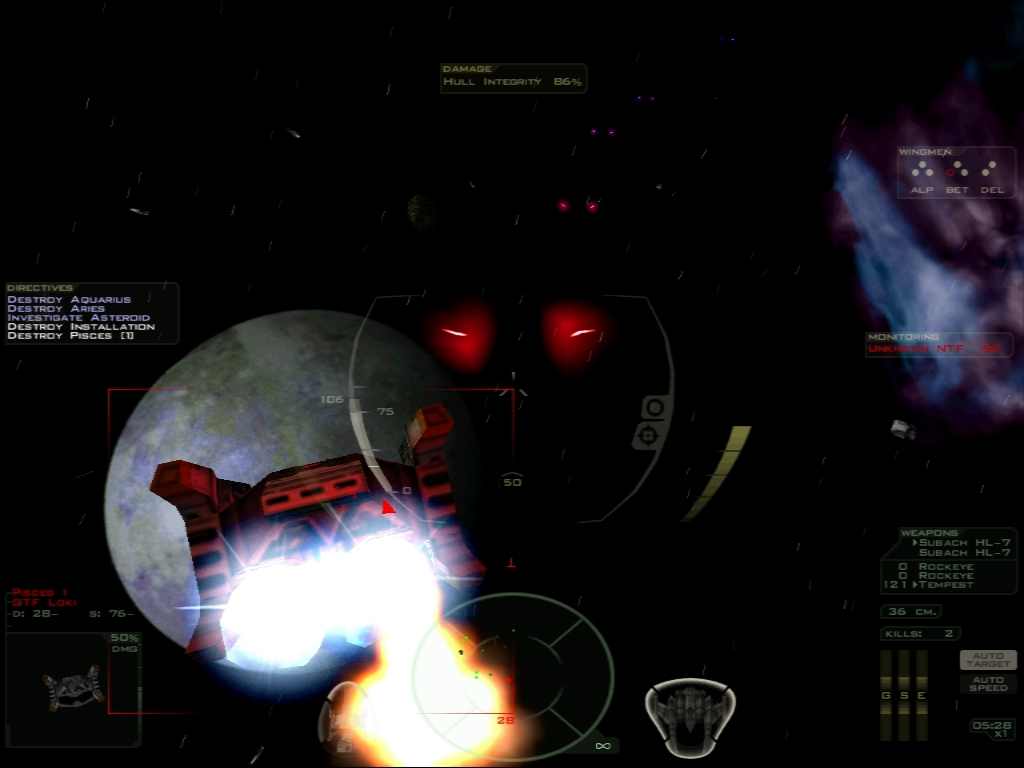Our Verdict
Breathtaking action, atmosphere, story, and graphics come together to create a truly compelling combat experience.
PC Gamer's got your back
Tyler Wilde provides commentary followed by our original review of FreeSpace 2 from the January 2000 issue of PC Gamer US.
FreeSpace 2 appeared on Steam last week like a wizened old man with a pipe stepping into a conversation between youngsters. "My word, you must be Elite's great, great grandson ," he enthused. "And who do we have here—can it be Freelancer's boy ? Well, I'll be damned, how's your old man doing? I haven't spoken to Wing Commander in ages."
That's how I imagined it happening, anyway. Sadly, the FreeSpace 2 Steam release hasn't seen any modernizing—the textures are still smears of grey—but that doesn't stop it from being great. To honor its new inclusion in the Steam catalog (it was already on GOG , mind you), here's our original review from January 2000. Also check out our 2012 Reinstall column on FreeSpace 2 for a more modern take.
Update: As Jim points out in the comments, do check out the FreeSpace 2 Source Code Project as well.
***
FreeSpace 2 review
Thanks to some subtle improvements, FreeSpace 2 is free to rule the cosmos as the best space combat game yet to hit the PC.
Required: Pentium II, 64MB (96MB for 3D acceleration), 500MB hard-drive space
We recommend: Pentium II 500, ATI Rage 128 or TNT2, 128MB RAM, 1GB hard-drive space
It's telling that Interplay removed the word Descent from the title of FreeSpace 2. It was a somewhat tenuous connection to begin with, designed either to give Interplay's fledgling space combat game a brand name boost or because of a trademark conflict (pick your story). Now that FreeSpace stands on its own as the finest space combat game in town, the Descent connection has been severed, and this remarkable series is free to carve its own path. It has the field pretty much to itself, with Wing Commander on extended hiatus while Origin gears up for its multiplayer-focused relaunch, and the future of the X-Wing series in doubt. But even if it wasn't the only new game in town, its tight, engrossing space combat action would make it the clear leader in its category.
In Descent: FreeSpace, the long war between the Terrans and the Vasudans was interrupted by a powerful new race called the Shivans. The enemies put aside their differences and allied to destroy the Shivans. Though they succeeded, their civilizations were left in ruins and they were completely cut off from Earth. Thirty-two years later, the fragile peace between the two still holds, but a new Terran faction has arisen with a fresh distrust of the Vasudans. As this faction grows and draws devotees from the Terran military, the Shivans make their expected return, turning the long peace into a four-way fight.
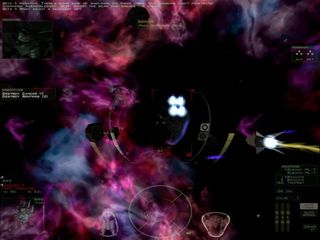
Story drives FreeSpace 2 in a way the original barely tried, with more effective use of narrative through cinematics, briefings, and in-game scenes. So much is going on that it sometimes can be hard to track all the plots and subplots, particularly when events occur in the thick of a battle. You may go into one mission with a specific goal only to have the plot jerk you in a completely different and unexpected direction. Events, characters, and mission parameters are meticulously woven into an intricate, plausible, engrossing story that, like all the best narratives, keeps you moving forward to the next mission to see what happens.
Much of the appeal of FreeSpace 2 comes from the total integration of action, story, and setting. You're never popped out of your game role, and missions don't feel like the conventional missions found in most space sims. A lot of factors make this work. For starters, I found few missions which required you to just fly around until all the enemies are dead. Goals are elaborate and often multi-tiered, with occasional stretches of near-boredom punctuated by moments of intense action, just like Earth-bound fighter combat. Even though they're scripted, the missions feel natural, not too puzzle-like and not too you-against-the-galaxy. If you try five times and can't win a mission, you are offered a chance to just skip it with no penalty. If you choose to fight on, you'll be asked the same question after each failed attempt. It's a thoughtful touch that keeps the story on track for those who have trouble with some of the greater challenges.
The other major factor in bringing this universe to life is the sheer scale of the ships and battles. If size impresses you, then the capital ships in FreeSpace 2 will knock you on your ass. They are vast vessels, reaching up to six kilometers long and bristling with weapons. Cap ships have massive beam weapons to train on other cap ships, smaller beam weapons to take out fighters, and flak cannons to throw up a deadly veil of lead. Massed cap ship battles, with large ships facing off against each other, come as close to creating the feeling of a World War II naval battle in space as any game has ever come. Huge ships trade broadsides, formations hit and run, flak peppers your hull, and a single well-placed bomb can decide the day. These are simply some of the best-scripted, most intensely designed space missions ever. They are by turns smart and nail-biting, requiring a mixture of good tactics and fast reactions. That's what fighter combat, in space or on Earth, should be all about.
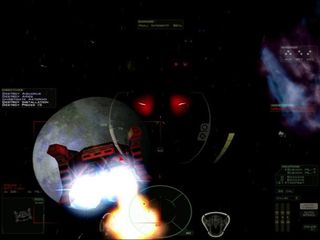
You'll fly these missions as a Terran pilot in a diverse assortment of new ship designs, with an opportunity to fly some ships from the other side. Terran forces are a mix of old, refitted cap ships and new fighters designs, while Shivan vessels are largely the same. As mission leader, you have enough wing commands and targeting options to deal with any contingency. One of the real appeals of FreeSpace 2 is the ability to target individual weapons and subsystems. You can take out weapons control, take out a weapon, or take out the entire ship. You can also order your wing to do any of these things through re-mappable hotkeys and a quick menu-based order system. The control interface is just about as perfect as it can be, with more targeting options (target the vessel targeting you, target the last vessel to attack ship X, target the ship with paisley wallpaper in the bathroom, and so on) than you could ever hope to use. Situational awareness is awesome, with a HUD that places every bit of information on the screen without getting too cluttered. As for the wingmen, they're generally okay, but could use a better sense of self-preservation. I found that their skills at targeting the enemies were good, while their evasion skills were poor.
Visually, FreeSpace 2 is much better than the already exceptional Descent: FreeSpace. Resolutions up 1024x768 and 32-bit color depth are supported if you have the right hardware (hardware acceleration is required.) Textures look terrific, right down to the different squadron insignias on the sides of ships. Explosions are thoroughly satisfying, as are beam shots and flak bursts. One of the most visually arresting new environmental tricks are the nebular clouds. Akin to flying through blue cotton candy, they create the tension of a limited visibility situation in space, where you wouldn't think such an effect would be possible. It also plays havoc with instruments, so that you practically run into the enemy before you spot him. This makes for some really tense moments. When that cap ship slowly takes shape from the mists, complete with bursts of flak and firing turrets, it's a chilling moment. Frame rates are smooth despite all this detail, and no real hitches or pauses were noticed. Force feedback support is excellent, particularly in afterburner phase, when you also get a nice rumbling shudder in your HUD.
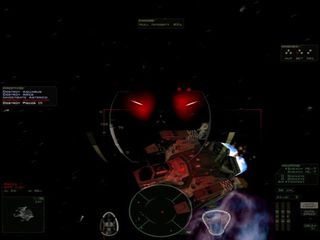
Mutliplayer support via Parallax Online (PXO) is very good, improving greatly upon the laggy original. Support for up to 12 players runs well on higher-speed connections, but 56K and below will encounter some problems. Smaller battles run fine on these slower connections. LAN and TCP/IP is supported along with IP address connections. You need to register with PXO.net to get into the matching service, but registration is simple and unobtrusive. A separate utility lets you launch and run a stand-alone server with complete configuration and control options. A link to SquadWar.com installs with the game, and takes you directly to a very novel and intricate game of controlled team-on-team play. SquadWar enables you to join or form squads, select a league, and challenge other teams to combat across a map. The victorious team gains control of the sector being fought over, and then can move on to challenge or be challenged for another sector. We hear a lot about persistent universe online simulation gaming, but this is the real McCoy, albeit in a rudimentary form. PXO has their work cut out for them in managing this, but it could and should explode into the next big online sim realm.
It's actually harder to write a review of a good game than it is to slam a bad one. You run the risk of sounding like a press release just listing and praising the features. I really, really looked for something negative in this game. The manual? Nope: it's fine and detailed. Number of missions? Plenty of them, although they are all in the campaign with no stand-alones, which some may not like. Hell, the sucker even has a very formidable mission editor called Fred2 that comes with the game. Bugs? Haven't found any. Not even any crashes. Pretty much everything you could possibly want in a space combat game is here. It's not particularly new or innovative in its specifics, but the implementation is about as good as we've seen. As of now, FreeSpace 2 is the space sim to beat. — T. Liam McDonald
Breathtaking action, atmosphere, story, and graphics come together to create a truly compelling combat experience.
PC Gamer is the global authority on PC games—starting in 1993 with the magazine, and then in 2010 with this website you're currently reading. We have writers across the US, Canada, UK and Australia, who you can read about here.
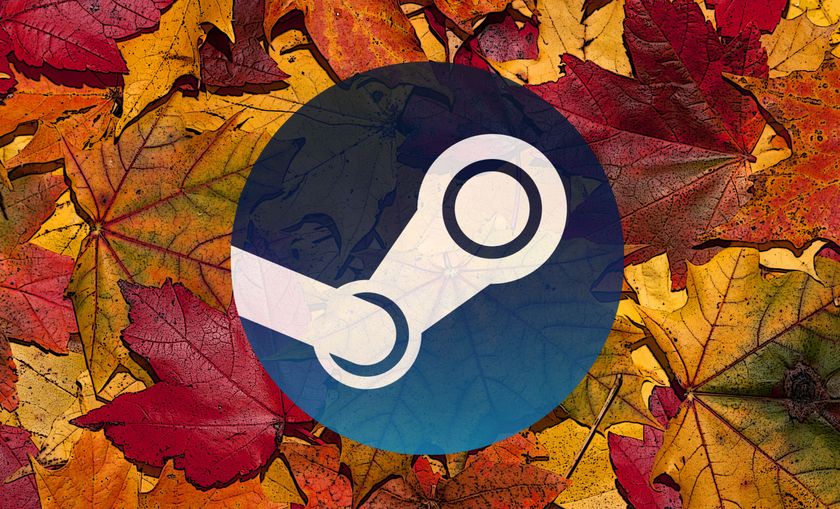
After years of running awkwardly close to the Winter Sale, the Steam Autumn Sale will start 2 months early this year

Elden Ring Nightreign director didn't want to 'encroach too much' on the lore fans hold sacred by including Dark Souls bosses, but admits 'I thought it'd be kind of fun'
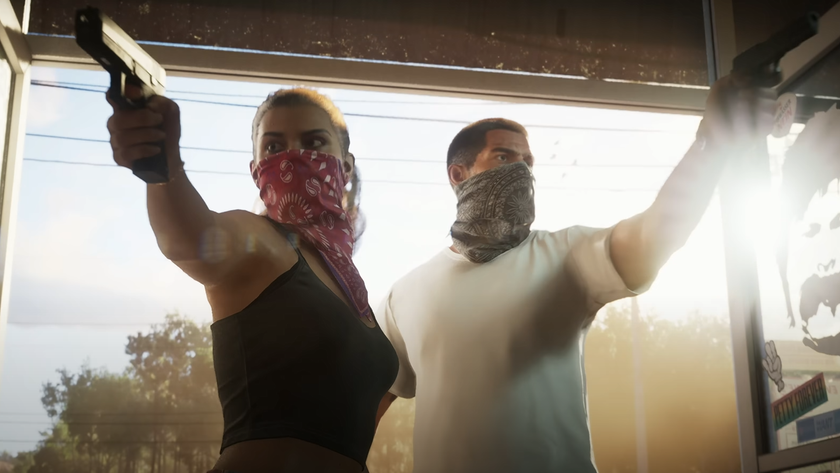
Rockstar launched an official Discord server yesterday, and it's already a jungle in there
